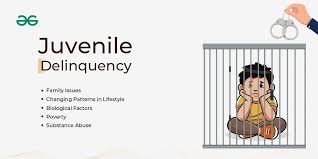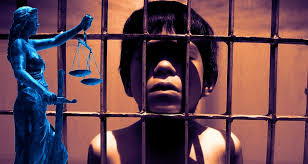Juvenile Laws at India
India's juvenile justice system is designed to address offenses committed by minors (individuals under 18 years of age) with a focus on rehabilitation and protection. The legal framework governing juvenile justice in India has undergone significant changes to balance accountability with the best interests of the child.
⚖️ Legal Framework
Juvenile Justice (Care and Protection of Children) Act, 2015: This Act consolidates laws related to children alleged and found to be in conflict with the law, as well as children in need of care and protection. It emphasizes a child-friendly approach in the adjudication and disposal of matters, aiming for rehabilitation and social reintegration. The Act came into force on January 15, 2016.
Juvenile Justice (Care and Protection of Children) Amendment Act, 2021: Enacted to streamline adoption procedures and redefine categories of offenses committed by juveniles, this amendment empowers district magistrates to issue adoption orders, aiming to expedite the adoption process.
🧒 Age of Criminal Responsibility
General Provision:The Juvenile Justice Act applies to children below 18 years of age
16 to 18-Year-Old Offenders:Under certain conditions, juveniles aged 16 to 18 involved in heinous offenses (e.g., murder, rape) can be tried as adultsA Juvenile Justice Board assesses whether the juvenile should be treated as an adult based on factors like the nature of the offense and the juvenile's mental and physical capacity
🏛️ Juvenile Justice Boards
Establishment and Function Each district in India has a Juvenile Justice Board (JJB) responsible for handling cases involving juveniles in conflict with the la. The Board consists of a magistrate and two social workers, one of whom must be a woma. They determine the appropriate action, focusing on rehabilitation and social reintegratio.
🏢 Juvenile Homes and Rehabilitation
*Observation Homes and Special Homes: Juveniles found in conflict with the law may be placed in observation homes during the inquiry process and in special homes if found guily These facilities provide education, vocational training, and counseling to aid rehabilitatin.
*Aftercare Organizations: Post-release, juveniles may be placed under the supervision of aftercare organizations that assist in their reintegration into sociey.
🛑 Child Protection Measures
*Prohibition of Child Marriage Act, 2006: This Act aims to prevent child marriages and protect children from the associated ham. It sets the legal age of marriage at 18 for females and 21 for maes.
**Integrated Child Protection Scheme (ICPS)*: Launched in 2009, the ICPS aims to secure the safety and protection of children, especially those in need of care and protection or in conflict with the a. It provides a framework for child protection services across the counry.
🧑⚖️ Legal Assistance and Rights
National Commission for Protection of Child Rights (NCPCR: Established in 2007, the NCPCR monitors the implementation of child rights and addresses grievances related to child welae.It ensures that laws, policies, and programs align with the best interests of chilren.
Legal Representatio: Children in conflict with the law have the right to legal representain The Juvenile Justice Act mandates the provision of legal aid to ensure fair proceedngs.
--
India's juvenile justice system strives to uphold the rights of children while ensuring accountability for offenses commitd.The focus remains on rehabilitation and reintegration, aligning with international standards for child protection and jusice.





0 comments